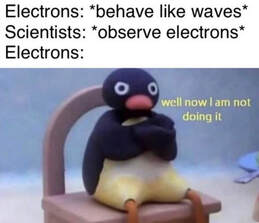
In 1900, Max Planck, in trying to understand the mathematical principles behind blackbody radiation, postulated that energy was not continuous, but came in discrete amounts.
He admitted that this was a mathematical trick to make the model fit observations.
Nonetheless, his idea, of energy being quantised, was taken up by Albert Einstein to explain the Photoelectric Effect. Later it was taken up by Niels Bohr to understand the structure of the atom.
What was a 'mathematical trick' led to complete paradigms shift what is now known as Quantum Mechanics.
The following lessons explore the development from Max Plank to Schrödinger and Heisenberg.
He admitted that this was a mathematical trick to make the model fit observations.
Nonetheless, his idea, of energy being quantised, was taken up by Albert Einstein to explain the Photoelectric Effect. Later it was taken up by Niels Bohr to understand the structure of the atom.
What was a 'mathematical trick' led to complete paradigms shift what is now known as Quantum Mechanics.
The following lessons explore the development from Max Plank to Schrödinger and Heisenberg.
Planck and Black Bodies
This video covers the basics of the back body curve, and Planck's attempt to reconcile the observations with the current theories. His attempt led to the birth of quantum physics
Interactive
We have seen this curve before, in the discussion on blackbodies in Thermodynamics
The issue was not that the curve was that shape. Rather the issue was that there was no mathematical model that could explain that shape, using classical physics - in particular, treating energy as a continuous phenomenon
We have seen this curve before, in the discussion on blackbodies in Thermodynamics
The issue was not that the curve was that shape. Rather the issue was that there was no mathematical model that could explain that shape, using classical physics - in particular, treating energy as a continuous phenomenon
Check your understanding
